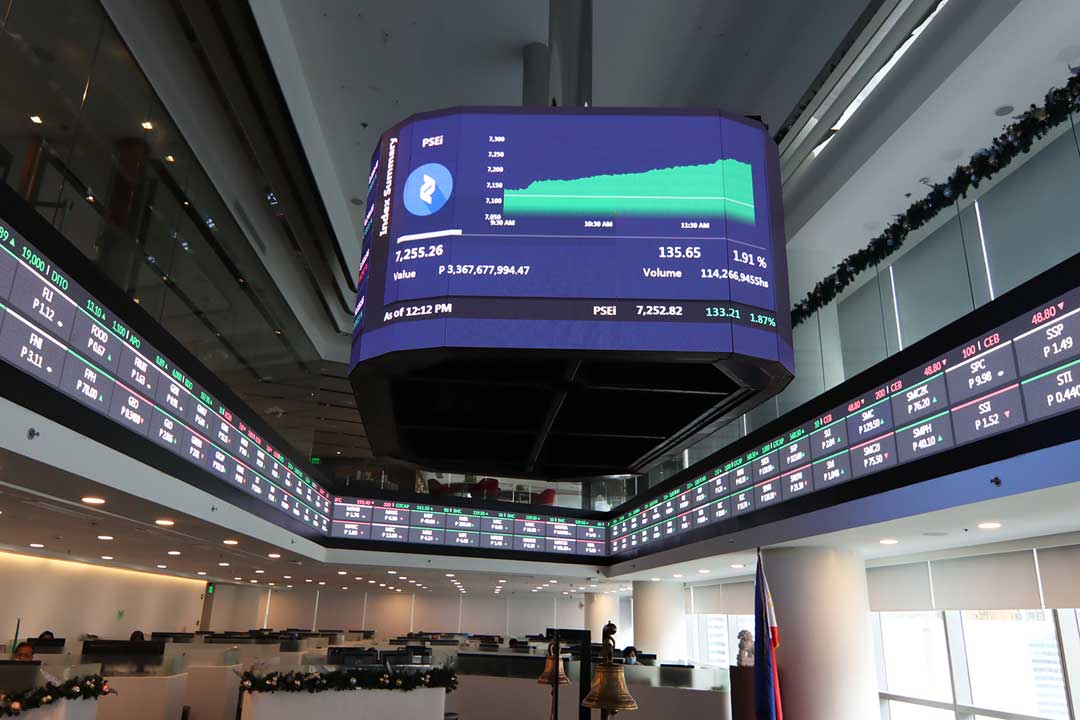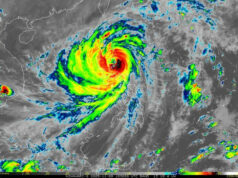US-China trade truce could provide relief to Philippine markets

By Aaron Michael C. Sy, Reporter
PHILIPPINE financial markets could get some short-term reprieve from the volatility it saw in recent months after the United States and China on Monday agreed to slash tariffs temporarily.
“The trade truce should be good for equities, including the PSEi (Philippine Stock Exchange index). The US dollar will be strong given that the probability of the US falling into stagflation has decreased significantly,” Bank of the Philippine Islands Treasurer and Global Markets Head Dino R. Gasmen said in a Viber message.
“The trade truce will likely be a positive driver for the stock market as it somewhat reduces the short-term likelihood of a global economic slowdown,” AP Securities, Inc. Research Head Alfred Benjamin R. Garcia said in a Viber message.
He said their year-end target for the PSEi is now at 7,456, down from 7,752 previously. “This downgrade reflects our tempered gross domestic product growth outlook on the back of policy uncertainties from abroad, which directly and indirectly impact the profitability of local listed companies.”
Mr. Garcia added that the peso will likely maintain its strength in the short term, even as the dollar initially strengthened following the trade deal news.
A trader likewise said that the peso could remain within the P55 to P56 range in the short term as players continue to monitor the global trade picture.
“It’s still a wait-and-see scenario for the market as the trade deal is temporary. We still have to monitor headlines on developments between the two countries with regards to the tariffs. So, any news that may negatively affect the trade talks may result in renewed selling pressure against the dollar,” the trader said.
On Tuesday, the PSEi surged by 1.68% or 108.62 points to close at 6,566.82. This was the bellwether’s best finish in over four months or since it ended at 6,625.17 on Jan. 6, which was before US President Donald J. Trump returned to the White House for his second term.
Meanwhile, the peso closed at P55.795 per dollar, weakening by 28.5 centavos from its P55.51 finish on Friday, Bankers Association of the Philippines data showed. Year to date, it is still up by P2.05 from its end-2024 close of P57.845.
A rally in global stocks and the dollar lost some momentum on Tuesday, as initial euphoria over a trade truce between the United States and China gave way to the persistent concern among investors over the impact of the standoff on the global economy, Reuters reported.
The world’s two largest economies have initiated a 90-day pause in their trade war, bringing down reciprocal tariffs and removing other measures while they negotiate a more permanent arrangement.
The agreement has reignited investor appetite for stocks, cryptocurrencies and commodities, unleashing a 3.3% rally on Wall Street the previous day.
By Tuesday, some of that enthusiasm had ebbed. Futures on the S&P 500 and Nasdaq fell 0.4%, underscoring the caution towards US assets.
The dollar surged against a basket of currencies on Monday by the most in a day since April 22. By Tuesday, some of that had faded, leaving most other major currencies stronger across the board.
Following the Geneva talks, the US said it will cut tariffs imposed on Chinese imports to 30% from 145% while China said it would cut duties on US imports to 10% from 125%.
Ratings agency Fitch estimates the US effective tariff rate is now 13.1%, a notable decline from 22.8% prior to the agreement but still at levels unseen since 1941 and above the 2.3% that prevailed at the end of 2024.
The US government went one step further on Tuesday, announcing it will cut the “de minimis” tariff on Chinese shipments of items valued at up to $800.
Mr. Trump’s unpredictable approach to the economy, trade and international diplomacy has fanned concern about the outlook for US growth. Together with a lack of progress in hashing out deals with trade partners, these factors have driven investors out of US assets for weeks, to the benefit of safe havens like gold, the Japanese yen and Swiss franc.
The shift in US-China trade relations has also led traders to reduce their expectations for US Federal Reserve rate cuts, as they believe policymakers may have more leeway if the risks to inflation abate.
Traders are now pricing in 58 basis points (bps) of cuts this year, down from over 100 bps during the height of tariff-induced anxiety in mid-April.
This outlook could affect Philippine bond yields, the analysts said.
“Government securities yields should be slightly higher as the probability of rate cuts by the Monetary Board will be affected by the reduction in expected rate cuts by the US Federal Reserve,” Mr. Gasmen said.
Last week, Bangko Sentral ng Pilipinas Governor Eli M. Remolona, Jr. told Bloomberg that the central bank is open to cutting benchmark interest rates by a further 75 bps this year amid cooling inflation.
The Monetary Board last month resumed its easing cycle after an unexpected pause in February, cutting borrowing costs by 25 bps to bring the policy rate to 5.5%. Its next meeting is on June 19.
A second trader said in a phone interview that local debt yields could move sideways in the short term as trade talks continue to develop and as interest in US bonds wanes.
“If trade talks are good, foreign investors will buy bonds in the Philippines. Demand and rates could move sideways because trade talks are still developing,” the second trader said. — with Reuters



